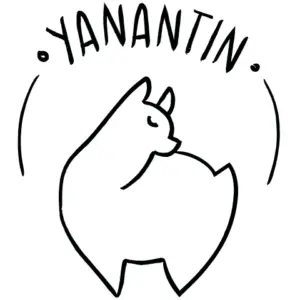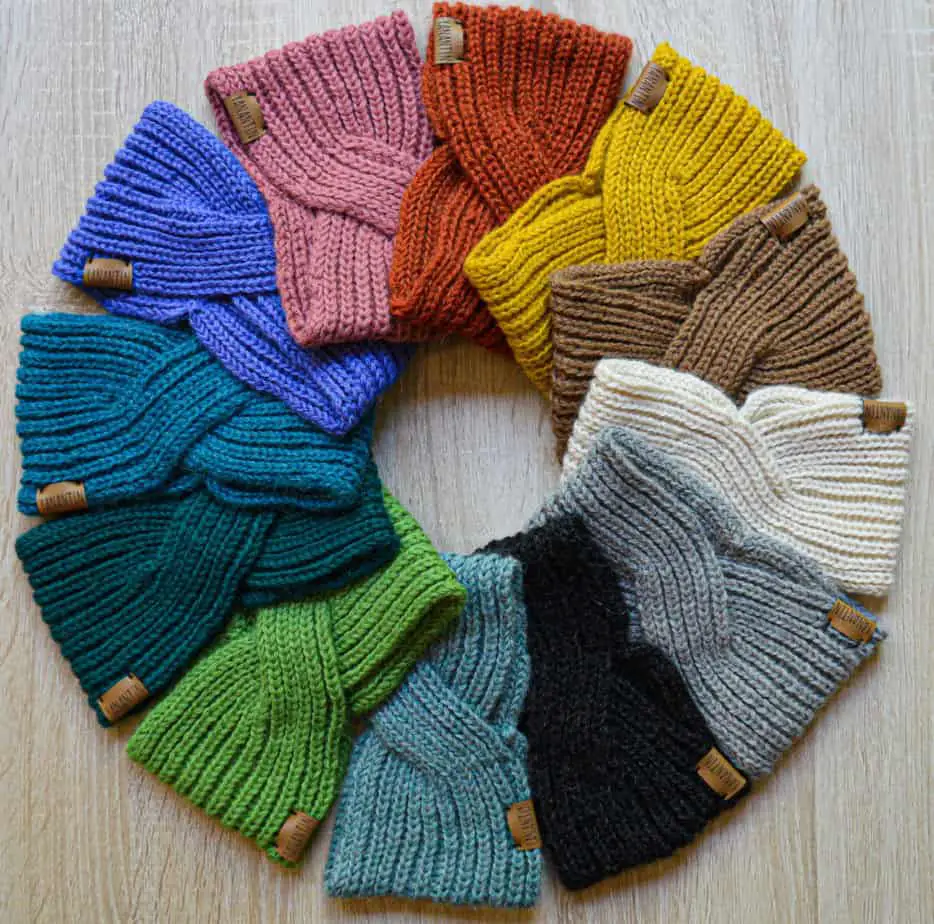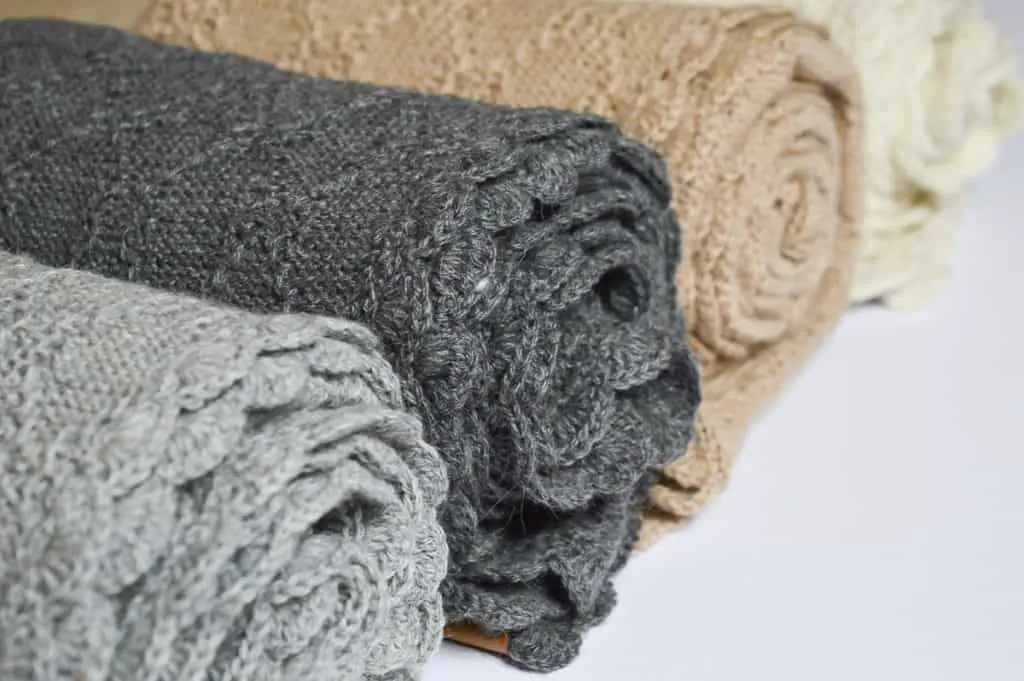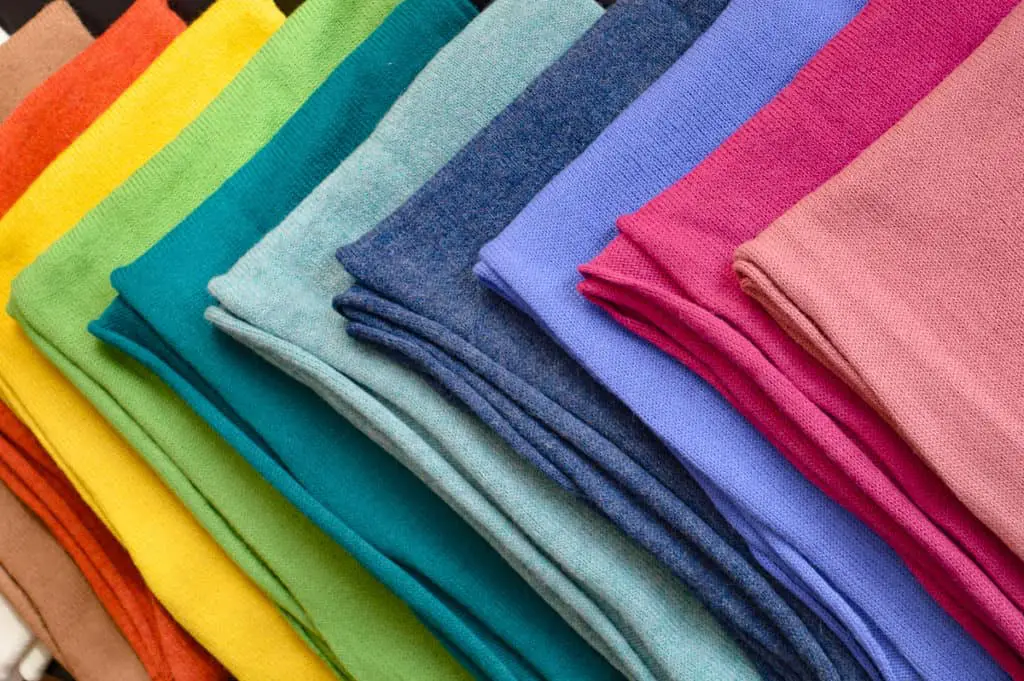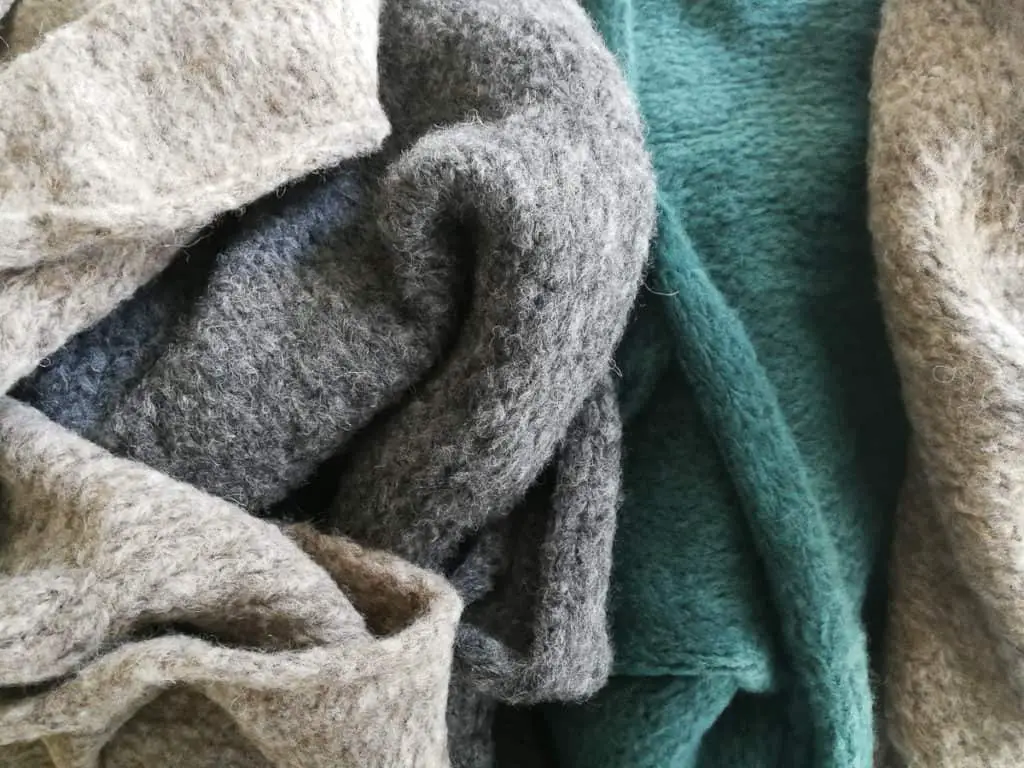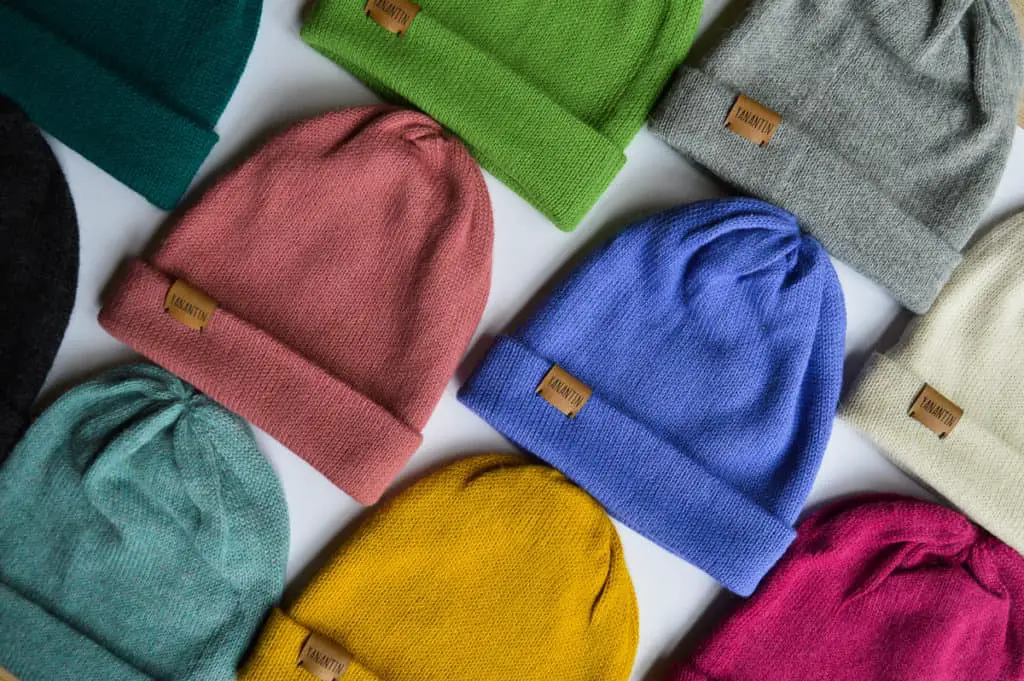I didn’t know much about alpacas until I went to South America for the first time, and I clearly remember seeing an alpaca for the first time. Little did I know that I would fall in love with their fiber and even start my own brand of alpaca woolen products!
If you want to learn more about the alpaca and its beautiful fiber, you are probably wondering where to start. So, let’s start with some alpaca 101 basics: what is alpaca wool, where does it come from and what is it used for?
Kampen Alpaca wool refers to the yarn that is made from the hair of an alpaca. Alpacas are South American camelids that produce a high quality fleece with many features and benefits, like being soft, warm, and breathable. Alpaca wool can be used for weaving, knitting, felting and even insulation.
The alpaca fiber is incredibly versatile and has many benefits that make alpaca woolen garments unique.
Where Does Alpaca Wool Come From?
Alpaca wool comes from the fiber of an animal called an alpaca. An alpaca is a South American camelid, which means that it is a family member of the llama, guanaco and vicuña.
While it is certain that at the time of writing this article most alpacas live in Peru, the only numbers that confirm this are slightly outdated.
The most complete report I found was from Consejo Nacional de Camélidos Sudamericanos (CONACS) from 2005, so I’ve completed their list with the most updated information I could find (when newer information was available). I had to adjust the percentages that were initially given in the CONACS report.
That being said, the distribution of alpacas is as follows:
| buy Lyrica online from mexico Country | # of Alpacas | % of Total |
|---|---|---|
| Peru | 3 598 0001 | 79.36% |
| Bolivia | 500 0001 | 11.03% |
| Australia | 200 0003 | 4.41% |
| United States | 53 0002 | 1.17% |
| United Kingdom | 45 0006 | 0.99% |
| Chile | 45 0001 | 0.99% |
| Canada | 28 5004 | 0.63% |
| New Zealand | 26 0005 | 0.57% |
| Asia (multiple countries) | 19 0001 | 0.42% |
| Ecuador | 4 0001 | 0.09% |
| Other | 15 0001 | 0.33% |
| TOTAL | 4 533 500 | 100% |
According to CONACS, Peru is the main exporter of alpaca wool and it is most likely that your alpaca woolen garment comes from there. However, “foreign” alpaca wool has increased over the past few decades and you will probably find more locally grown alpaca wool in the United States, United Kingdom and Australia now, too.
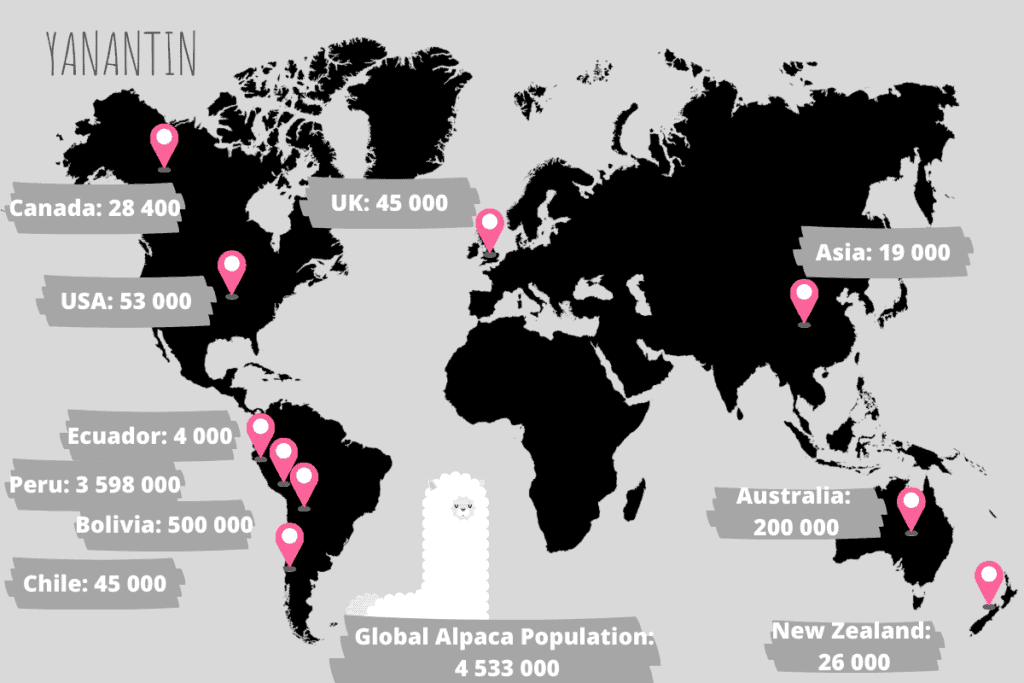
How Is Alpaca Wool Made?
The hair of an alpaca is shorn once a year at most. The shearing season in South America is from November through March, when it is warmest. Alpacas can’t be shorn more often than once a year, as their fleece needs about this much time to grow the ideal fiber length and quality.
Sometimes, the shearing process starts 24 hours beforehand, when the animals are kept in a shed to make sure their fleece is dry and they are sorted by color.
Alpacas need to be shorn to prevent health issues and when done correctly, there is no harm done to the animal. In order to decrease the amount of stress that is put on an alpaca, the animal is restrained by its four legs (either bound or held down by caretakers). This way, there is less room for the animal to hurt itself.
Another important step to comfort an alpaca when it is shorn, is to have at least three people involved in the job: a main shearer, a caretaker and someone to separate the shorn fibers. Having the caretaker close is essential to keeping the animal at ease.
I wrote a full article about how alpaca wool is made: How Is Alpaca Wool Made and Is It Ethical?
After the preparations of the shearing process, 7 steps are left:
- Shearing: shearing itself is best done with a hand-used razor and ideally in “one cut”. Fleece that is cut off in one go will produce a higher quality yarn. By separating the different cuts, the uniformity of the fiber is maintained.
| Prime (First) Shearing | Second Shearing | Third Shearing |
|---|---|---|
| “Blanket” or mid-section Back of the alpaca | Neck Underbelly | Legs |
| 17-30 microns | >30 microns | >30 microns |
| 3-7 inches long | 2-5 inches long | 1 inch or longer (uneven fibers) |
- Sorting and carding: After the fiber is shorn, it needs to be sorted. Traditionally, this is a woman’s job in Andean culture. The precision of selecting the fibers by hand is an important job that requires much dedication and attention.
When the sorting is completed, the strong, long fibers will be carded. Carding is the process of combing out the long hairs until the fibers are uniform, ready to be spun.
- Torsion (Twisting): Fibers are then twisted together to form thick skeins of wool, either manually or industrially.
- Spinning: Spinning is still very often done manually in indigenous communities in Bolivia and Peru. In the manual process it is done by using a drop spindle, which produces a beautiful playful yarn. Industrial spinning is applied in larger productions.
- Washing: The alpaca fiber contains minimal levels of lanolin, but despite that it can still collect a decent amount of dirt in its fur. Alpaca wool therefore needs to be washed and scoured. Industrially, this is done before the spinning process. In a more artisanal process, it is done after spinning.
- Drying: Finally, the fiber is dried before they are spun into their final yarn.
- Coiling: When the fiber is dry, it is spun into its final yarn. The fibers are strong and elastic and can vary in thickness. Alpaca fibers can be spun into much thinner threads than sheep wool, for example.
A benefit of alpaca wool is that it dyes beautifully and absorbs colors well. Another advantage is that it already comes in 22 natural colors, which means that dyeing isn’t always necessary.

Then, from yarn to garment, there are different ways to make alpaca woolen fibers. From industrial knitting and large-scale production in China, to hand-made haute couture production in Italy, and from hand knitted garments in Bolivia to home-made locally-produced felted accessories.
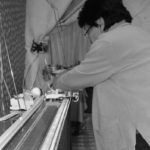


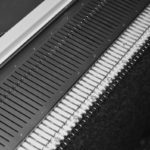
At Yanantin, I believe in the beauty of making things manually. However, I do think it is worth adding a tad of technology to speed up the process. Therefore, all Yanantin products are made with a manual knitting machine (unless mentioned otherwise), to get the best of both worlds. 🙂
Check out the Webshop to see all Yanantin Alpaca Products!
What Are the Characteristics of Alpaca Wool?
Alpaca wool is often praised for its special features and characteristics. It has many benefits over other types of wool and yet it is a versatile and accessible fiber.
Alpaca Wool Is Soft (Low Microncount)
There are different categories of alpaca and therefore different degrees of softness.
| Alpaca Fiber | Category | Microncount | Fiber Length |
|---|---|---|---|
| Royal Alpaca | Ultra fine | 18 microns | 60 mm |
| Baby Alpaca | Fine | 19-23 microns | 60-70 mm |
| Fine Alpaca | Medium | 23-28 microns | 65-75 mm |
| Medium Alpaca | Medium | <30 microns | 65-75 mm |
| Strong Alpaca | Coarse | >microns | 65-75 mm |
While softness is relative, it is still a fact that an alpaca fiber has smaller scales than a sheep fiber, even within the same micron range. This shows that alpaca wool generally has a lower prickle-factor, making it less likely to be itchy.
For more detailed information about this topic, I recommend reading the full article I wrote about fiber softness: Is Alpaca Wool Soft?
Alpaca Wool Is Strong (Fiber Length)
The fiber length, as you can see above, varies per category, but generally, alpaca wool fibers are long: anywhere between 6 to 7 cm is desired. There are many benefits to having a long wool fiber, the most important one being that it makes the yarn stronger.
Longer fibers interlock better which gives them less room to pill, shed or break, meaning that an alpaca woolen garment will not wear or tear easily. Alpaca woolen garments are known to be durable, even when worn often.
I wrote another article about this topic in which I explain in more detail how strong alpaca wool really is: Is Alpaca Wool Strong?
Alpaca Wool Is Hypoallergenic (Lanolin Free)
According to Cameron Holt, there is no such thing as a lanolin free wool fiber, and alpaca is no exception. However, the alpaca fiber contains such low levels of lanolin, that most (if not all) of it is washed out during production.
This means that alpaca wool is safe to wear for people with a lanolin allergy.
Read more about alpaca wool being hypoallergenic in another one of my articles: Is Alpaca Wool Hypoallergenic?
It also means that less water and detergent is needed during the production process (compared to other, more greasy types of wool!), making alpaca wool much less damaging to the environment.
Alpaca Wool Has a Unique Fiber Structure
Alpaca fibers have a unique structure compared to other wool fibers. Alpaca wool is soft and fine, without being weak or vulnerable. While these features in and of themselves aren’t necessarily unique, it is the combination of all features combined that makes alpaca wool special.
Alpaca wool is generally smoother compared to other wool fibers with an equal diameter. This means that its scales are smaller, which means they are less protruding. This means that alpaca wool has a lower prickle factor than other fibers of a similar micron count.
Normally, smaller scales could indicate a loss of strength, because they have less ability to interlock (and when fibers interlock it means that their strength is enhanced when they are bundled together), and here’s the amazing thing about alpaca: its scales are still very well able to interlock among each other, producing a strong fiber nonetheless.
I wrote a much more thorough explanation of the alpaca fiber’s structure in this article: What Is So Special About the Alpaca Fiber?
Alpaca Wool Is Warm
Another benefit of the alpaca’s unique fiber texture is the fact that they have a medullated core. Thanks to this, alpaca woolen garments provide warmth in cold temperatures.
Normally, a medullated fiber indicates a thicker fiber diameter and a more brittle fiber on top of that. However, with alpaca wool, the fibers are still strong and soft despite having the small “airbags” inside.
If you want to learn more about how warm alpaca wool is, check out my article about it: Is Alpaca Wool Warm?
The hollow core also makes an alpaca woolen garment very lightweight, without losing any of its warmth.
Alpaca Wool is Resistant
Besides being warm, soft and strong, there are many other features of alpaca wool:
- Water-resistant: alpaca wool has great wicking capabilities and will wick away moisture before it gets absorbed by the fiber.
- Wind-resistant: alpaca wool is wind-resistant to a high degree, depending on how tightly knit the garment is.
- Fire-retardant: alpaca wool is slow to ignite and is self-extinguishing. It also doesn’t melt onto your skin when it is on fire.
- Stain-resistant: just like water, liquids are wicked away quickly before they can cause a permanent stain.
- Odorless: the medullated core of the alpaca fiber is protected from bad smells thanks to the fiber texture. When smells do penetrate the fiber, they are quickly evaporated by the fiber.
- Wrinkle-free: alpaca woolen garments are soft and silky, which means that wrinkles disappear when a garment is reshaped.
Click the links to read more about each of the features in separate articles I wrote about them.
The scales on a wool fiber help every wool fiber to be very strong, flexible and resistant. The alpaca fibers however, with their small scales, can do all these things to an even higher degree.
The fact that the scales on an alpaca fiber are small, makes it more difficult for smells, water, or stains to penetrate the fiber. The core is therefore very well protected, no matter what it is exposed to.
When something does penetrate the fiber, the little airbags inside will work to trap water water, heat, or smells and eliminate them, through evaporation. The fact that alpaca wool is highly breathable will help protect it.
Read more about this in another article I wrote: Is Alpaca Wool Breathable?
Alpaca Wool Is Durable
Durability is an important aspect of quality. Durability (Wikipedia) means that a product is functional and remains functional during its lifespan. Alpaca wool is generally of high quality, and you can expect an alpaca woolen garment to last.
The scale-like texture of the alpaca fiber contributes to its durability. Not only does it protect the yarn from rain, stains and smells, it is also an indispensable part of its flexibility. It helps the fiber to move freely without breaking or becoming brittle.
A flexible fiber is more likely to last and maintain its strength over time.
What helps is the fact that alpaca wool has natural crimp. This means it has the ability to stretch out and jump back into place, basically like an elastic band. While alpaca wool is not as resilient as other wool fibers, it has enough memory to perfectly maintain its shape over time.
Read more about this in the full article I wrote: Does Alpaca Wool Stretch?
Alpaca Wool Looks Good on You!
Who doesn’t like to wear clothes that naturally look good on you? Alpaca wool is one of those fibers. It’s silky, shiny texture doesn’t only look incredibly luxurious and exclusive, but it also means it drapes well.
When a garment drapes well, it means it has a natural way of adapting to your body contours, which makes it look flattering and gracious.
The fact that alpaca wool has such a shiny fiber, also means it is less likely to pill or shrink.
Click the link to find out more: Is Alpaca Wool Shiny?
Alpaca Wool Is a Sustainable Fiber
Another huge benefit that has contributed to alpacas recent growth in popularity is the fact that alpaca wool is considered a sustainable fiber. There are several reasons why:
- Alpacas leave a very small footprint on the Earth.
- Alpaca wool is 100% biodegradable (when undyed)
- Alpaca wool requires very little chemical treatment during its production process.
- Alpaca woolen products are durable and are therefore perfect for a slow-fashion lifestyle.
- Alpaca woolen products don’t require much washing (if at all, they will be hand washed).
I love the fact that alpaca wool is super sustainable, so I wrote a much more detailed article about it, that you can find here: Is Alpaca Wool Sustainable?
How Do You Care for Alpaca Woolen Products?
An (expensive!) alpaca woolen garment can be completely ruined by washing it the wrong way. It is therefore important to keep a few things in mind when caring for your alpaca woolen garments.
The good news is that there is a really easy way to maintain alpaca wool looking pretty and that is by not washing it.
When washing an alpaca woolen garment ALWAYS make sure that you hand wash your items. I wrote a step-by-step guide on how to wash alpaca woolen garments. Read it here: How Do You Wash Alpaca Woolen Products?
PRO-TIP #1
Alpaca woolen garments are odor-resistant and will not absorb smells easily. When smells are absorbed, airing will be sufficient to remove them.
Hang an alpaca woolen garment in a steamy environment, like a bathroom when you’re taking a shower, and (most) smells will disappear!
PRO-TIP #2
On top of that, alpaca woolen garments are stain-resistant to a high degree, so they are very unlikely to get dirty easily. Most liquids can be wicked off immediately. More stubborn liquids can be removed under running (cold) water.
When you spill something on an alpaca woolen garment, take a piece of kitchen towel and squeeze the liquid out of the wool (without rubbing).
PRO-TIP #3
Alpaca wool is vulnerable to moths and mould and mildew, so when you store an alpaca woolen garment during summer, make sure you put them in an airtight container and add a moth-repellent inside the box.
Read the full guide on how to store alpaca woolen garments during summer here: How To Store an Alpaca Garment?
What Is Alpaca Wool Used for?
As you can imagine, the versatility of the alpaca fiber makes it perfect for a wide range of uses. The main uses of alpaca wool can be divided into five categories:
- Knitting
- Felting
- Weaving
- (Raw) fleece
| Main Purpose | Example |
|---|---|
| Knitting | Hats Scarves Blankets Headbands Mittens Sweaters |
| Weaving | Scarves Blankets Stoles Ponchos Ruanas Pillow Cases |
| Felting | Hats Accessories Dryer Balls Duvets |
| (Raw) Fleece | Housing insulation Coats Blankets Stuffed Animals Bird nest filling |
For the full list of uses of alpaca wool, check out this article I wrote: 23 Things Alpaca Wool Can Be Used For
On top of that, you can use alpaca wool for a wide variety of activities. Given its special fiber and all the benefits that come with it, you can do things with alpaca wool that otherwise would require several changes of clothes!
Given that alpaca wool is breathable and light, it is perfect for high intensity activities. On top of that, alpaca wool protects against a wide range of weather conditions, such as wind, rain and sun, so it makes it the perfect hiking gear!
- Read more about this in my article: Can You Go Hiking With Alpaca Wool?
For similar reasons, alpaca wool is also perfect for a ski trip! When you’re in the snow and on and off ski lifts, you’re going to want to wear something that will protect you from wind, sun and sweat, and alpaca wool is just perfect for that!
- Read more about this in my article: Can You Go Skiing With Alpaca Wool?
Alpaca wool is also the perfect travel companion for any type of trip. Whether you go camping or on a city trip, alpaca wool is the perfect versatile item that you can use and wear for every occasion!
- Read more about this in my article: Can 8 Reasons Why Alpaca Wool Is GREAT for Traveling
One of my favorite uses of alpaca wool is for babies. Babies feel super comfortable with natural fabrics that help regulate their temperature. They will love the feeling of wool and will enjoy touching the soft fabric.
- Read more about this in my article: 11 Reasons Why You Want to Use Alpaca Wool For Your Baby
What Is the History of Alpaca Wool?
Alpaca wool is one of the oldest fabrics used in South American history. Alpacas were highly valued animals in pre-inca and inca times and were exclusively reserved for royals. Back in those times, people didn’t need or use money to exchange goods or services.
People worked together based on a principle called ayni: the idea of “today for you, tomorrow for me”. Everything you give will come back to you eventually. If I work for you today, you will work for me tomorrow. Andean communities thrived on this principle of sharing.
Under special circumstances people were given gifts as a way to show gratitude. Fabrics and alpaca wool specifically, were the greatest gift of all.
With the arrival of the Spanish around 1500 many indigenous beliefs and traditions got lost. Many indigenous people were forced to flee to the rough mountainous areas where they had little left but their alpacas.
The Spanish did not have much interest in alpacas and when they weren’t slaughtered, they were interbred with llamas to make them stronger. The fiber quality deteriorated because of this.
The times of terrorism in Peru meant another fallback for the indigenous communities and their alpacas. The communist group Sendero Luminoso (Shining Path) killed a large part of the alpaca population between 1967 and 1992. Life in the Andean highlands became even more harsh and uncertain.
Read the full history of alpaca wool in another article I wrote: What Is the History of Alpaca Wool?
Only recently has (international) interest for the alpaca fiber increased. While 90% of all alpaca farmers in Peru are considered small farms (with less than 150 alpacas), 3% of the breeders take up the majority of the marketspace as big farms (more than 600 alpacas). While the big farms might be able to improve the fiber quality and Peru’s global position on the export market, many small farmers struggle to maintain their alpaca businesses profitable.
Luckily, many (small) fair-trade brands are emerging and are helping small(er) farms to grow.
If you’re curious about learning more about ways to support indigenous communities through alpaca woolen products, read this article I wrote: Does Alpaca Farming Support Indigenous People In Andean Countries?
What Is the Difference? Suri vs. Huacaya vs. Guanaco vs. Llama vs. Vicuña
The alpaca family is big and full of beautiful camelids. Here are some details about them:
| Camelid Family | Common Name | Population | Main Habitat | Characteristics |
|---|---|---|---|---|
| Lamini – Vicugna – Vicugna Pacos | Alpaca Suri | 400 000 | Peru | Super shiny and long hair |
| Lamini – Vicugna – Vicugna Pacos | Alpaca Huacaya | 4 000 000 | Peru | 22 natural colors! |
| Lamini – Vicugna – Vicugna vicugna | Vicuña | 150 000 | Peru | The softest and most expensive fiber in the world |
| Lamini – Lama – Lama guanicoe | Guanaco | 600 000 | Argentina | Distinct reddish tone |
| Lamini – Lama – Lama glama | Llama | 2 500 000 | Bolivia | Super soft underneath its coarse coat |
| Camelini – Camelus – Camelus Dromedarius | Dromedary Camel | 15 000 000 | Middle East | Soft undercoat up to 2 years old |
| Camelini – Camelus – Camelus Batcrianus | (Wild) Bactrian Camel | 2 000 000 (Wild: 1 000) | Central Asia (Wild: China & Mongolia) | Low thermal conductivity |
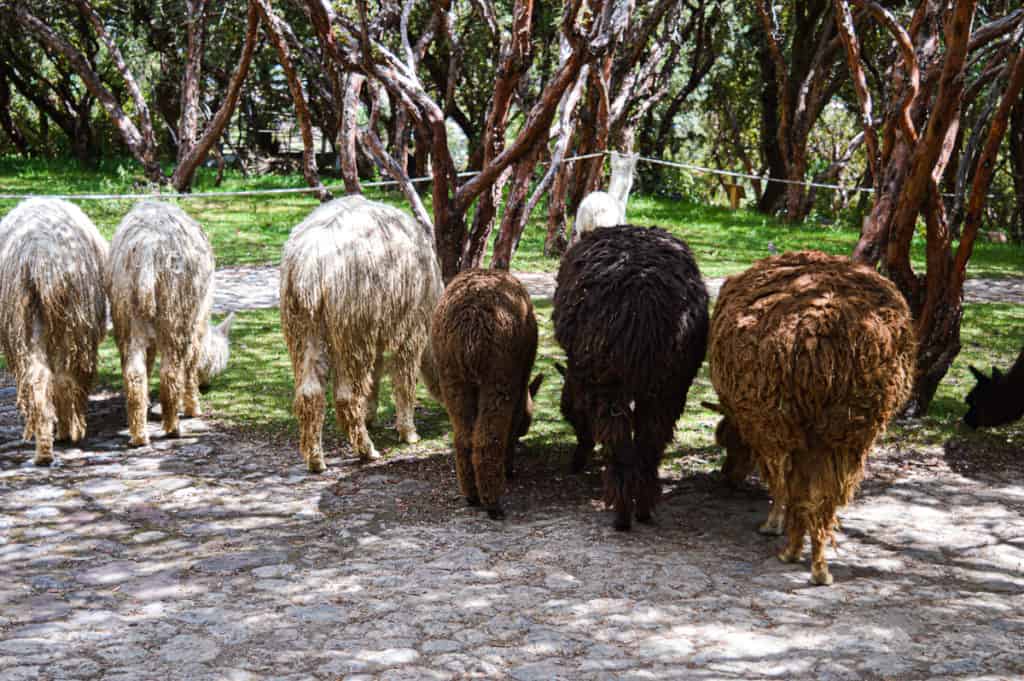
What Is Baby Alpaca?
Baby alpaca refers to an alpaca fiber that has a micron count between 19 and 22 microns. Despite the name, baby alpaca doesn’t necessarily have to come from a baby alpaca, although the younger alpacas do produce a softer fleece.
There are several things that make for a softer fleece. The “prime” cut (primaria), also called “blanket”, is shorn off of the mid-section of an alpaca. The back of an alpaca is generally softer and cleaner, as it is less exposed to friction and dirt.
It is generally known that shearing an alpaca makes the fleece thicker. It is therefore common, not necessary, that younger animals provide a softer fleece.
Depending on the nutrition, weather circumstances and breeding program that an alpaca is exposed to, the fiber quality can maintain its softness (= low microncount) over time, resulting in older alpacas producing baby alpaca.
Read the full article I wrote about what baby alpaca is here: What Is Baby Alpaca?
What Are Disadvantages of Alpaca Wool?
While alpaca wool is my personal favorite, I have to admit that there are some (potential) downsides of the alpaca fiber.
While alpaca wool is generally considered soft, its micron range falls exactly within the range that is potentially itchy for people with a sensitive skin.
| <20 microns itch-free | Royal and Baby Alpaca 18-23 microns |
| 21-29 microns most people don’t feel an itch | Fine Alpaca 23-28 microns |
| >30 microns itchy | Strong Alpaca >30 microns |
For the full article on whether or not alpaca wool is itch-free, you can click the link: Is Alpaca Wool Itch-free?
Despite alpaca wool being a durable and sustainable fabric, there is one aspect of it that compromises its sustainability: given that most alpaca wool still comes from South America, it means that it needs to travel halfway across the globe in order to make it to you.
Personally, I think that alpaca wool is still a great sustainable option, but if your approach to sustainability is by focussing on localism, this could be a downside of alpaca wool.
With that in mind, alpaca woolen garments can be expensive, too! While you can find fairly priced products in Peru and Bolivia, if you’re not currently planning a trip there, an alpaca woolen garment can cost you a bit.
While I personally think alpaca wool is worth every penny, I recommend you read this article I wrote to make up your mind yourself! (Why) Is Alpaca Wool Expensive?
The fact that alpaca wool comes from South America brings along another few potential downsides. While many brands focus on sustainability, fair-trade and/or fair wages, and ethical treatment of the animals, these are not always guaranteed when buying in South America.
Be careful and keep in mind that it might be worth paying a little extra if that means the workers and alpacas are treated well!
